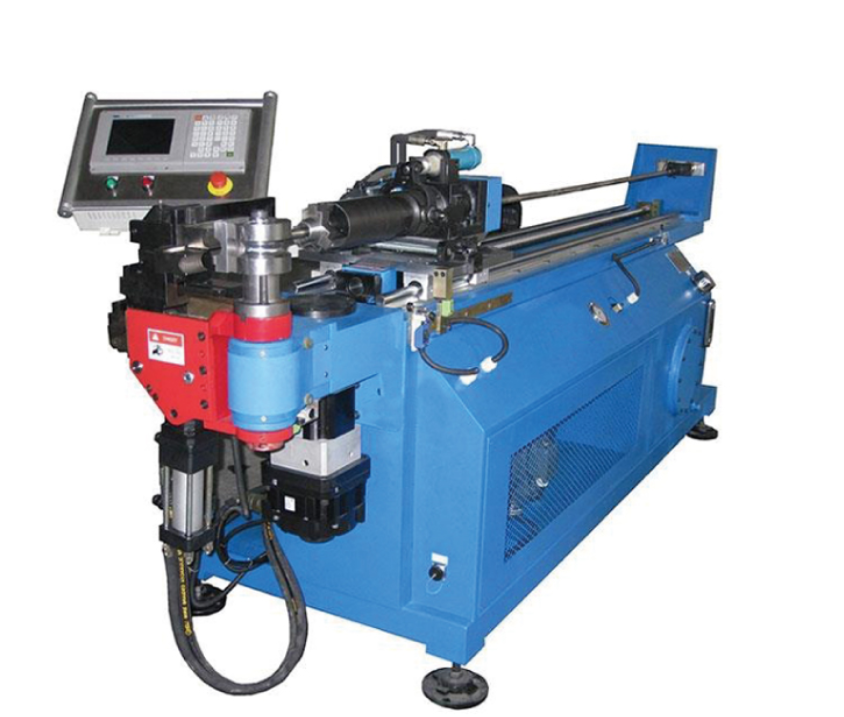
3D Pipe Bending Machine
(Total 1 Products)-
Min. Order:1CNC 3D Tube Bending Machine for Industrial Pipes: The precision master of three-dimensional forming of industrial pipesIn the complex layout of Industrial pipeline systems, the accuracy of three-dimensional Bending directly determines the flow...
A 3D Pipe Bending Machine is an advanced industrial device designed to bend metal, plastic, or composite pipes into intricate 3D shapes (e.g., multi-axis curves, helices, or custom geometries) with high accuracy. Unlike 2D benders that only create planar bends, it manipulates pipes along X, Y, and Z axes, making it indispensable for industries needing complex pipe layouts—such as automotive, aerospace, and HVAC.
Core Working Principle & Key Technology
The machine achieves 3D bending via a synergy of advanced components and control systems:
Multi-Axis Motion System: Features 3–6 programmable axes (rotational and linear) that adjust the pipe’s position and bending angle in real time. For example, a 5-axis model can rotate the pipe (C-axis) while bending (B-axis) and feeding material (X-axis), enabling complex curves.
Bending Mechanism: Uses either mandrel or mandrel-free designs:
Mandrel Bending: Inserts a metal mandrel into the pipe during bending to prevent collapse—critical for thin-walled pipes (diameter: 3mm–100mm) like aluminum aerospace tubes. Tolerance for bend angle: ±0.1°.
Mandrel-Free Bending: Relies on precise roller pressure for rigid pipes (e.g., thick steel), suitable for simpler 3D shapes and avoiding mandrel wear.
CNC Control System: Equipped with a digital panel that stores 100+ bending programs. Users input 3D CAD models or coordinate data, and the system automates axis movement, ensuring repeatable accuracy across batches.
Material Feeding & Clamping: Motorized feeders deliver pipes at adjustable speeds (0.5–5m/minute); hydraulic clamps secure the pipe during bending to prevent slippage.
Key Advantages
Complex Shape Capability: Creates 3D geometries (e.g., S-curves for automotive exhausts, helical coils for HVAC heat exchangers) that 2D benders can’t achieve, reducing the need for pipe joints (fewer joints mean lower leak risks).
High Precision: CNC control and multi-axis motion ensure consistent bend angles, radii, and spatial positioning (±0.2mm for linear dimensions), meeting strict industry standards (e.g., aerospace AS9100).
Efficiency Boost: Automates 3D bending in one setup, cutting production time by 50–70% vs. manual 2D bending + assembly. For example, a 3D automotive fuel line can be bent in 2–3 minutes vs. 10+ minutes with traditional methods.
Material Versatility: Handles diverse pipes—metal (steel, copper, titanium), plastic (PVC, PPR), and composite (carbon fiber-reinforced)—with interchangeable tooling (bending dies, clamps).
Typical Applications
Automotive: Bends 3D-shaped steel/aluminum pipes for exhaust systems, fuel lines, or brake lines—fitting into tight under-hood spaces while optimizing fluid/gas flow.
Aerospace: Manufactures titanium or aluminum 3D pipes for aircraft hydraulic systems or fuel manifolds, where weight reduction and leak-proof performance are critical.
HVAC & Refrigeration: Creates 3D helical coils for evaporators/condensers, maximizing heat exchange area in compact units (e.g., residential AC systems).
Medical Devices: Bends small-diameter stainless steel pipes (3–10mm) into 3D shapes for surgical instruments or diagnostic equipment, ensuring biocompatibility and precision.
Operational & Safety Tips
Program Validation: Test bending programs with sample pipes before full production—adjust axis speeds or pressure to avoid pipe deformation (e.g., kinking in thin-walled tubes).
Tooling Selection: Match bending dies to pipe diameter and material—e.g., use hardened steel dies for titanium pipes, plastic-compatible dies for PVC.
Safety Measures: Install safety guards around moving axes; use emergency stops to halt operation if pipe slippage occurs. Operators must wear gloves and safety glasses to prevent injury from metal shavings.
Calibration: Calibrate multi-axis motion monthly using laser measurement tools—misalignment causes 3D shape errors.
Maintenance Guidelines
Clean bending dies and mandrels after 100+ operations to remove material residue.
Lubricate axis gears and hydraulic clamps weekly with high-performance grease.
Inspect CNC system software quarterly for updates; back up bending programs to prevent data loss.
In summary, the 3D pipe bending machine revolutionizes complex pipe forming, merging precision, efficiency, and versatility. It is an essential tool for industries requiring high-quality 3D pipes, enabling innovation in product design while meeting strict performance standards.

3D Pipe Bending Machine
3D pipe bending machines are advanced industrial tools designed to shape pipes and tubes into intricate three - dimensional geometries with high precision. These machines utilize computer numerical control (CNC) technology to manipulate pipes along multiple axes, creating complex curves, spirals, and multi - plane bends that are critical for applications in aerospace, automotive, architecture, and fluid systems.
